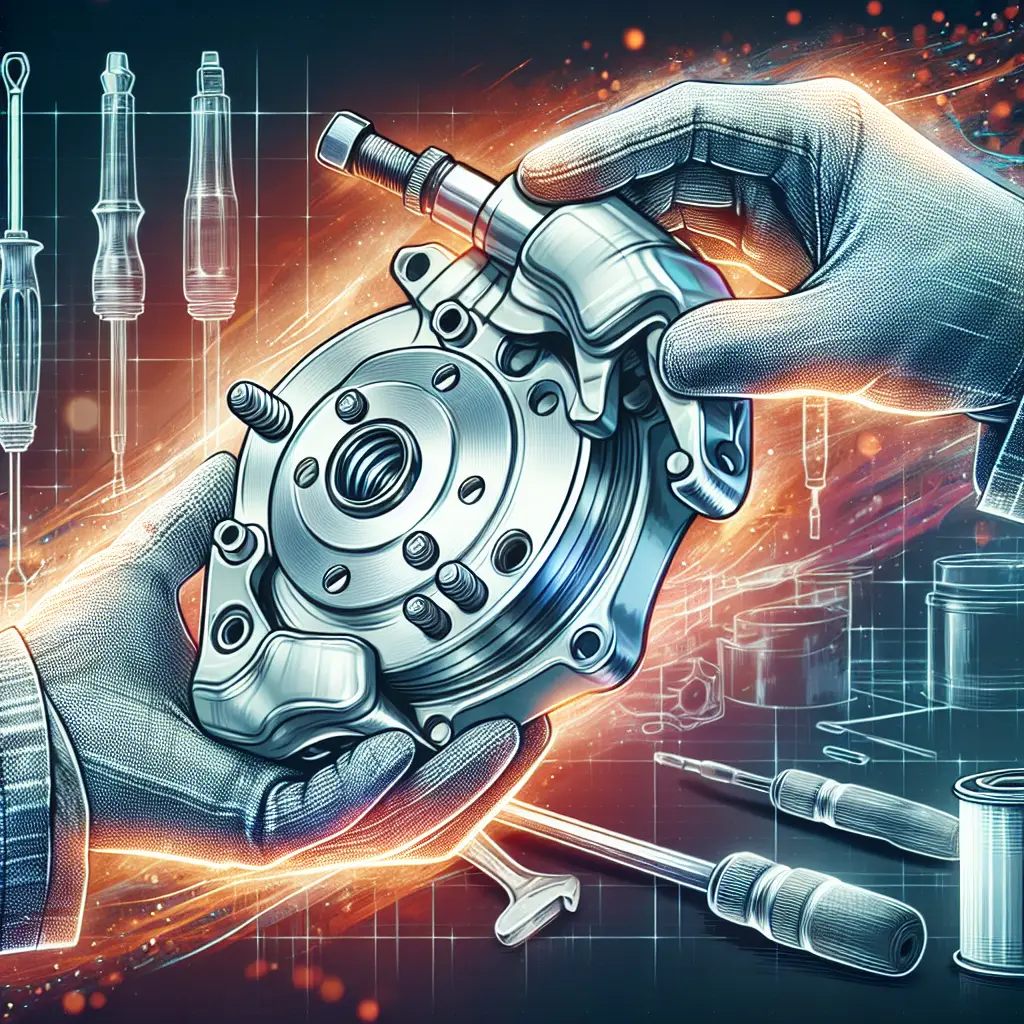How to Service Brake Calipers (The Right Way)
When it comes to maintaining your vehicle, servicing the brake calipers is a critical task that can ensure your safety and extend the lifespan of your car. Brakes are your first line of defense against road accidents, and they need to be routinely checked and serviced to perform perfectly everytime you hit the pedal. In this post, we’ll guide you through the process of servicing your brake calipers the right way, with tips and tricks to help you achieve the best results.
Understand Your Brake System
Before we dive into the servicing details, it’s essential to understand what brake calipers do. The caliper is part of the car’s braking system that pushes the brake pads against the rotors to slow down or stop your car. They are crucial in the operation of your vehicle’s disc braking system. Over time, dirt, debris, and rust can affect their functionality, hence the need for service.
Preparation Steps
Safety First
Ensure that the car is parked on a flat surface and the parking brake is engaged. Safety glasses and gloves should be worn to protect your eyes and hands from brake dust and fluids. (CDC Guide to Personal Protective Equipment)
Tools and Materials
You will need the following tools:
– Jack and jack stands
– Lug wrench
– C-clamp or caliper piston tool
– Wrench set
– Wire brush
– Brake cleaner spray
– High-temperature grease
– New brake fluid (if needed)
Having the right tools at hand simplifies the task and prevents damage to your vehicle’s components (YourMechanic Advice on Brake Tools).
Remove the Wheel
Loosen the lug nuts before lifting the vehicle with a jack, secure it with jack stands, and then completely remove the lug nuts and the wheel.
Servicing The Brake Calipers
Step 1: Inspect the Brake System
Check the calipers for any visible signs of damage or excessive wear. Pay attention to the brake pads and rotors as well. Look for uneven pad wear, which could indicate a sticking caliper.
Step 2: Remove the Caliper
Use a wrench to remove the bolts holding the caliper in place. Once the bolts are removed, carefully lift the caliper from the rotor. It’s recommended to support the caliper with a hanger or wire to avoid putting stress on the brake line.
Step 3: Clean the Caliper
Utilize a wire brush along with brake cleaner spray to thoroughly remove any built-up dirt or corrosion from the caliper. This also applies to the caliper bracket and bolts. Doing so provides a clean surface for the brake pads to slide on, reducing the chance of squealing brakes or uneven wear.
Step 4: Retract the Caliper Piston
As brake pads wear, the caliper piston extends out to keep the pads near the rotor. To fit new pads, the piston must be pushed back into the caliper body. A C-clamp or a dedicated caliper piston tool can be used to gently press the piston back into its housing.
Step 5: Lubricate Moving Parts
Using high-temperature grease, lubricate the caliper slider pins, piston, and any areas where the brake pad contacts the caliper carrier. Proper lubrication prevents sticking and noise, ensuring smooth operation.
Step 6: Reassemble the Brakes
Install the new brake pads, reposition the caliper over the rotor, and secure it with the caliper bolts. Torque the bolts to manufacturer specifications to avoid under-tightening or over-tightening, which can cause uneven wear or failure of the brake components.
Step 7: Bleed the Brake System
After servicing the calipers, it’s a great opportunity to bleed the brakes to remove any air that might have entered the system. This involves using a brake bleeding kit and possibly an assistant to apply pressure to the brake pedal as you release the brake fluid from the bleeder valves. Only open the bleeder valve when the pedal is being pressed and close it before the pedal is released.
Step 8: Refill Brake Fluid
Top up the brake fluid reservoir if necessary with the correct type of brake fluid, as indicated in your vehicle’s owner’s manual. Make sure not to overfill it. (Edmunds’ Guide on Brake Fluid)
Final Checks
Test the Brakes
Start the engine, apply the brakes, and check for a firm brake pedal. If the pedal feels spongy, additional bleeding may be required. Ensure that no warning lights are illuminated on the dashboard.
Check Wheel Alignment
After servicing your brakes and reattaching the wheel, it’s advisable to check your vehicle’s wheel alignment to ensure that your brake service doesn’t lead to uneven tire wear or steering issues.
Conclusion
Servicing brake calipers is a meticulous job that can ensure your vehicle’s safety systems remain in top-notch condition. With our steps, you have the fundamental knowledge to perform brake caliper servicing like a pro. However, if you’re unsure about any part of the process, it’s crucial to consult a professional or refer to your vehicle’s service manual for precise instructions. Proper maintenance will keep you, your passengers, and other road users safe.
Remember, regular vehicle maintenance not only improves safety but also preserves the value of your vehicle. And when it comes to something as critical as your brakes, it’s always better to be cautious and seek professional help if necessary.
Drive safe, and keep your brakes in check!

